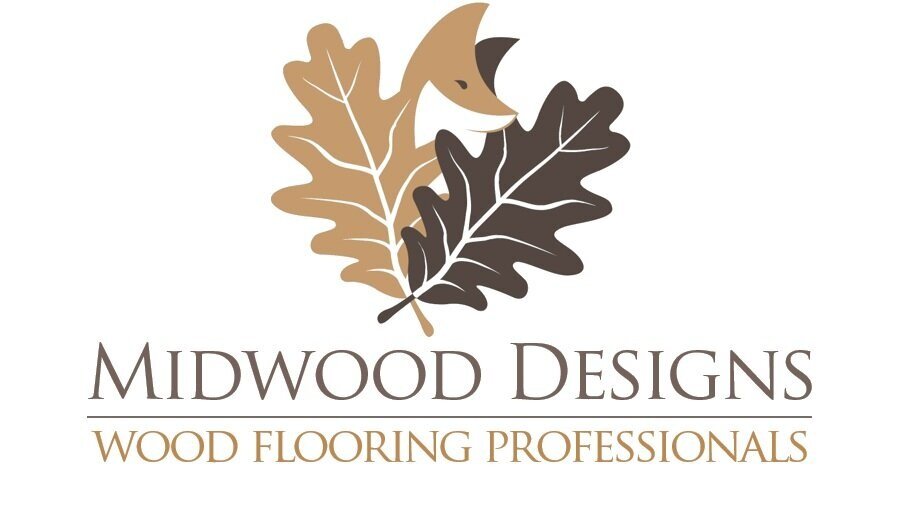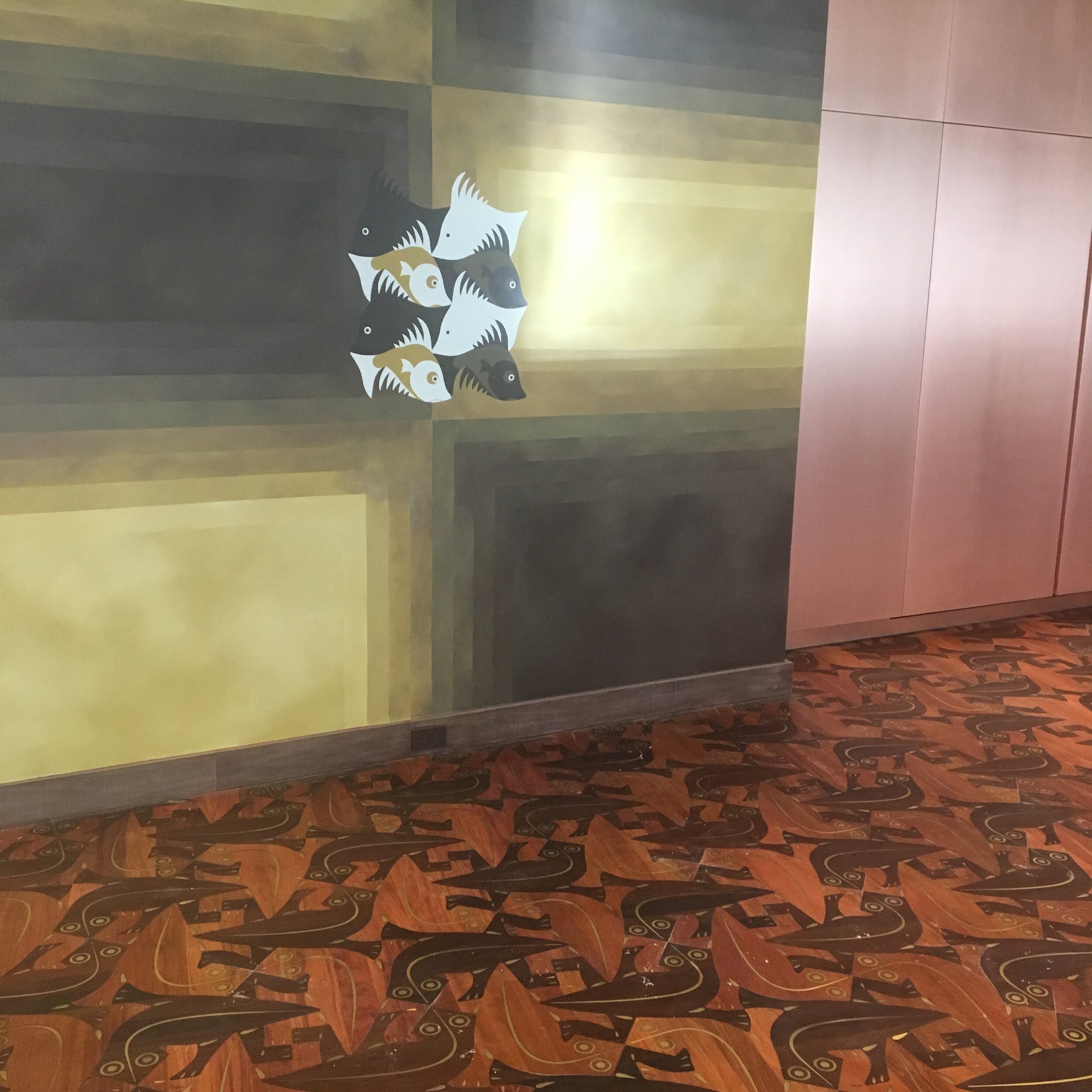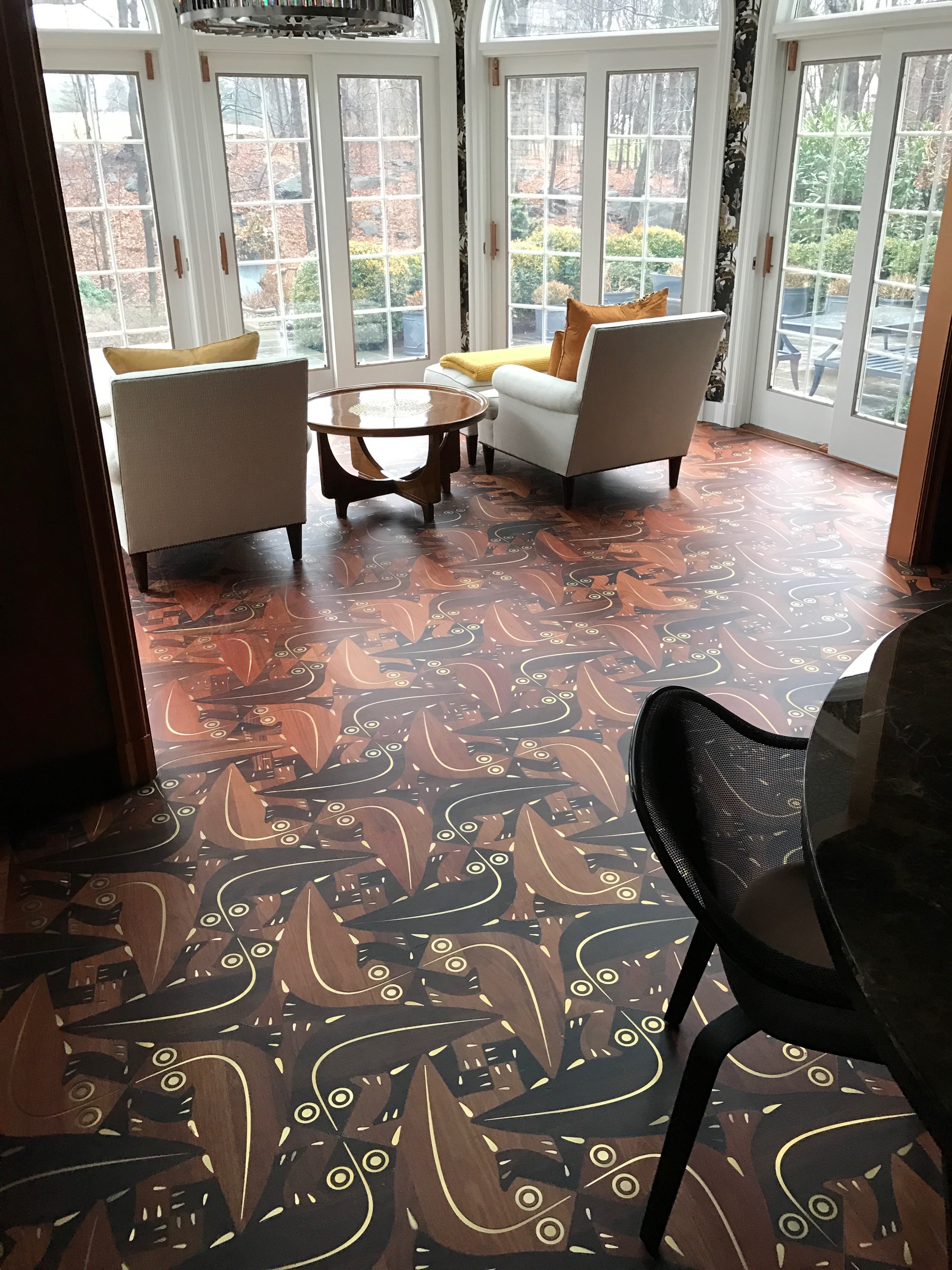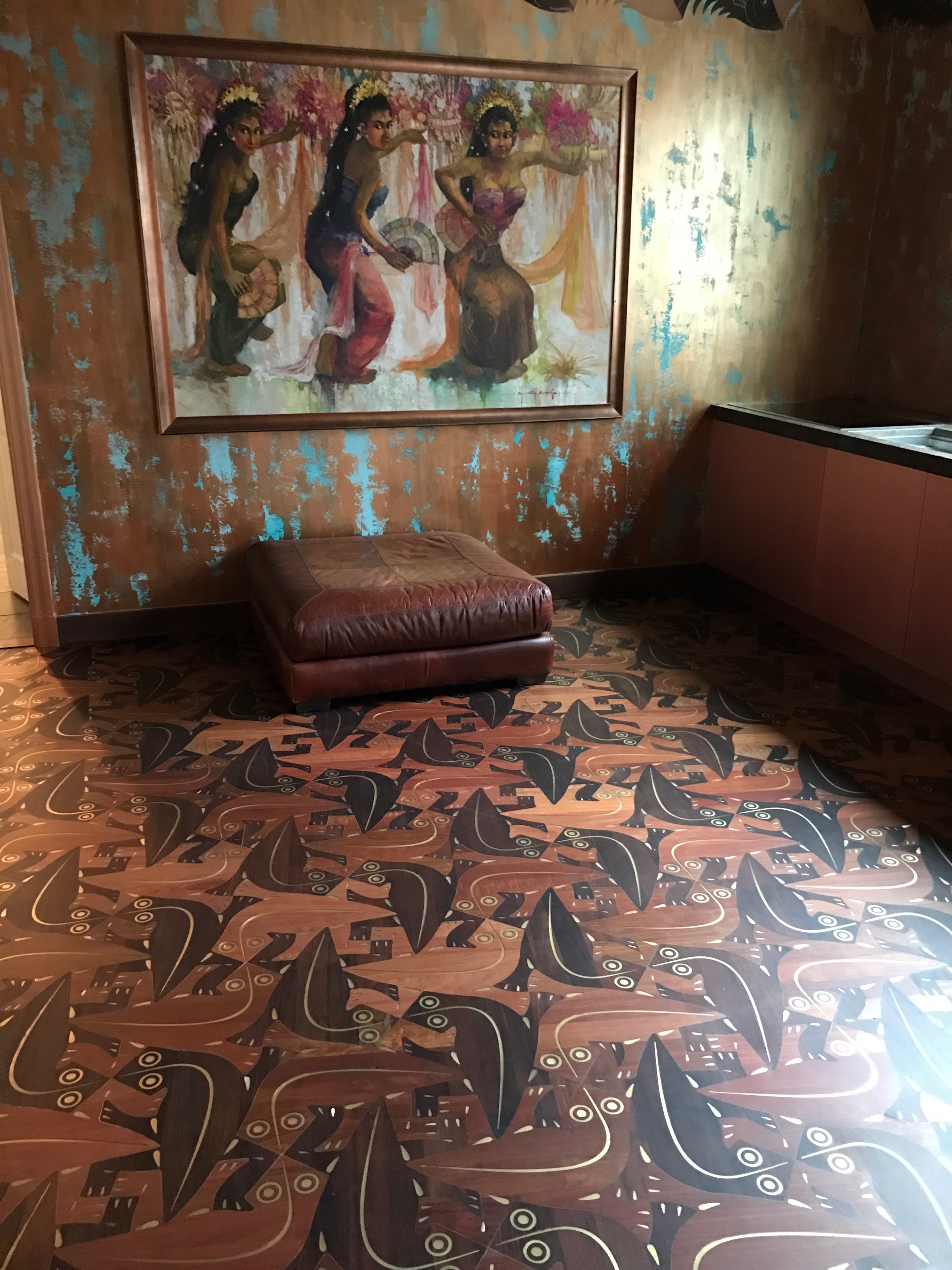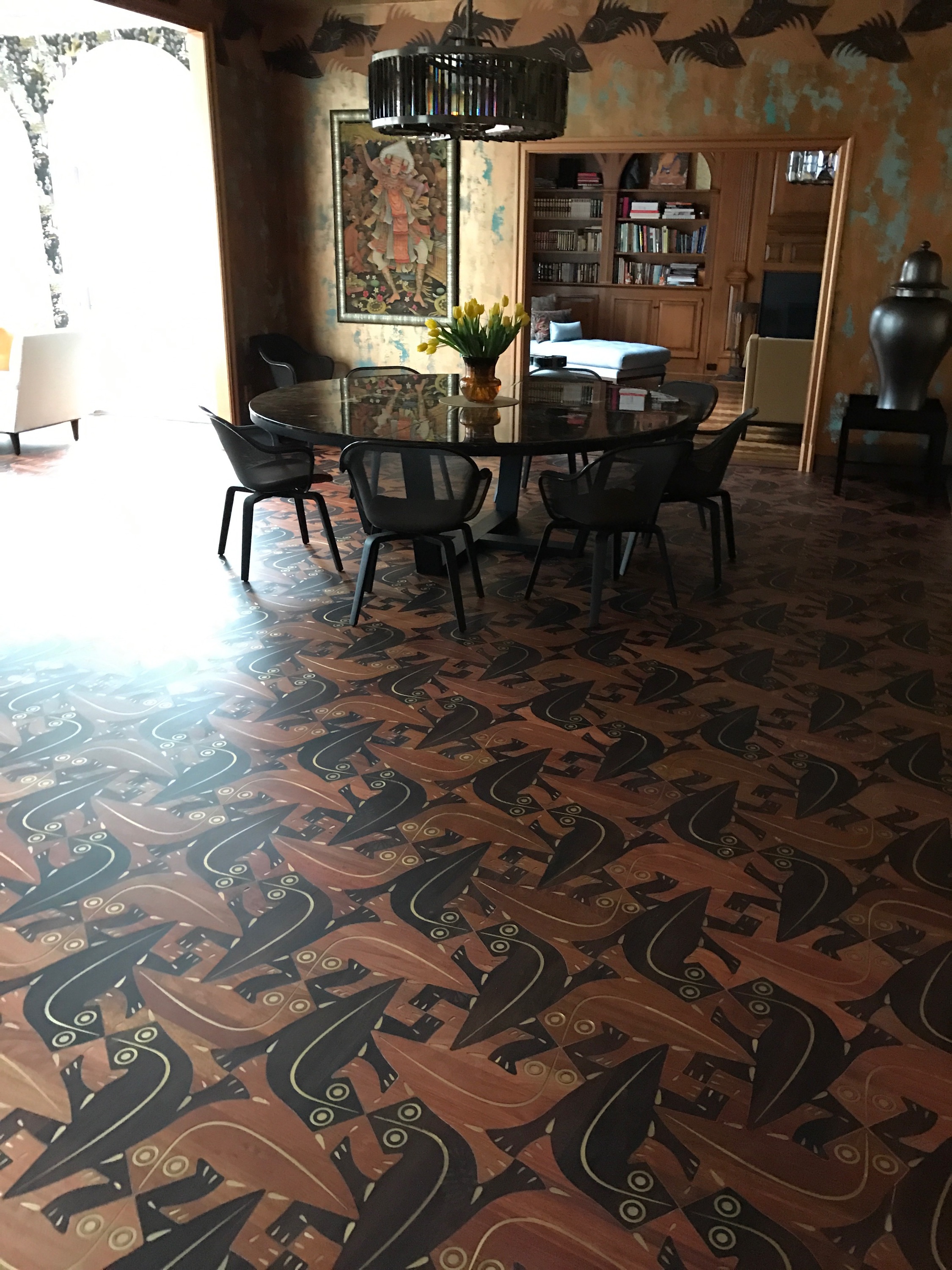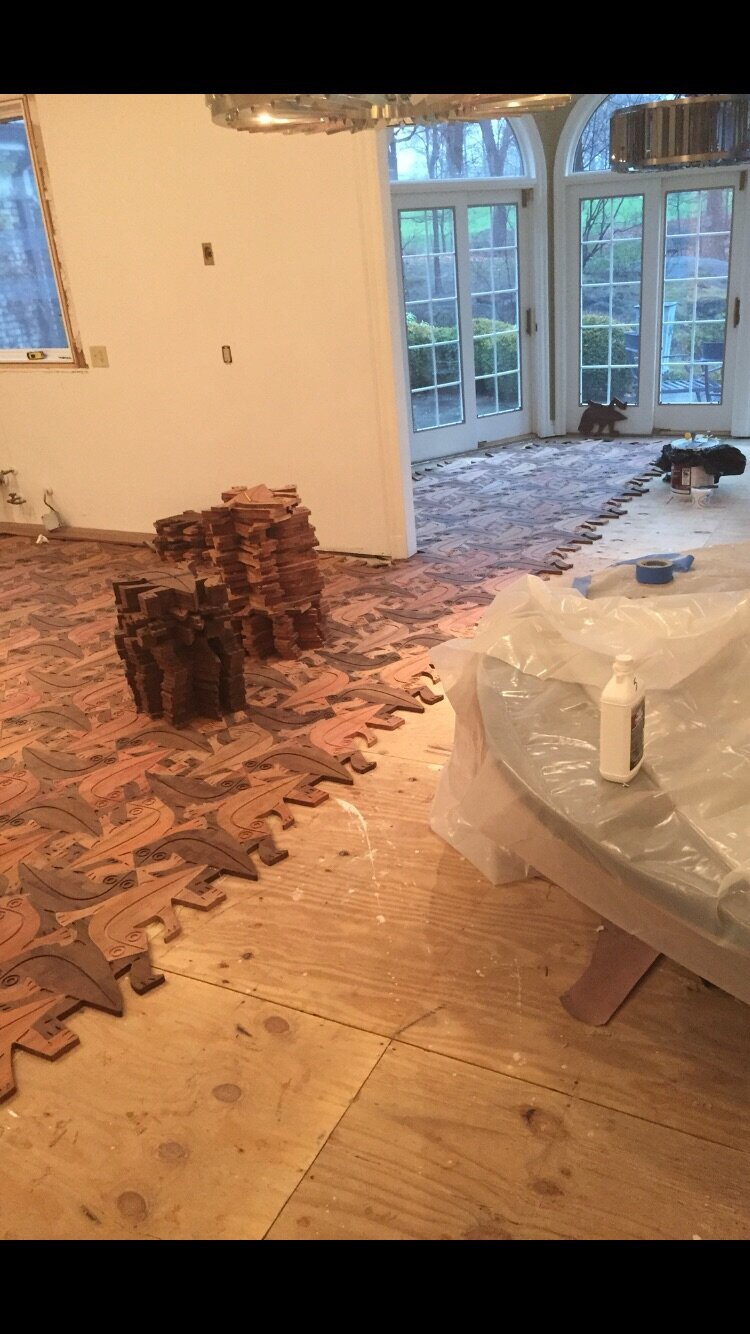Lizard TESSELLATION
Inspired by M.C. Escher
In 2015, we were approached by a passionate would-be client with an exciting and challenging idea for new wood floors in the sun room and dining hall of their vacation home.
Their vision? M.C. Escher’s timeless lizard tessellation spread across an area of over 1,000 sq. ft. and complete with repeating brass inlays. What we saw was an opportunity to create something truly unique and lasting and we were on-board to help make it a reality.
We started by working closely with the client to understand their vision - then created a series of prototypes meant to ascertain the exact characteristics that would best fit the arrangement, details such as relative size, material choice, type and composition of inlay, and others.
The result? We milled identical interlocking profiles out of 24” x 24” x 3/4” Peruvian Walnut, Brazilian Cherry, and Santos Mahogany panels, each complete with 5/16” deep pockets. With a 3-D effect in mind, we delivered a 1/8” high quality brass laminate inlaid into each pocket, then polished and carefully sealed with marine-grade clear epoxy.
When installing this pattern, we deliberately glued and fastened each salamander in place by driving nails on the inside of each 5/16” pocket, then returning to place the brass inlays on top before sealing them with the clear epoxy - ensuring that the full area is completely free of exposed nail-heads that would soon degrade the wood floors.
Each brass inlay was inspected for scratches, then individually polished. The walls and edges of each pocket on each lizard were cleaned and vacuumed before each brass inlay was inserted. Each pocket was filled with marine-grade clear two-part epoxy that was mixed on-site in small batches, and applied in two stages: the first to secure the inlay and seal off the interior of the pocket, and the second to fill the remainder of the pocket. This careful and methodical approach ensured that each inlay would appear crystal clear to the eye without a hint of haziness or definition loss.
After the epoxy hardened, the entire area was sanded thoroughly to achieve a flat, uniform, and most importantly finish-ready surface. After discussing finishing options with our clients, they opted for a durable and long-lasting water-based polyurethane with a satin sheen that would force the eye to focus on the pattern and not its glow.
The results speak for themselves.
